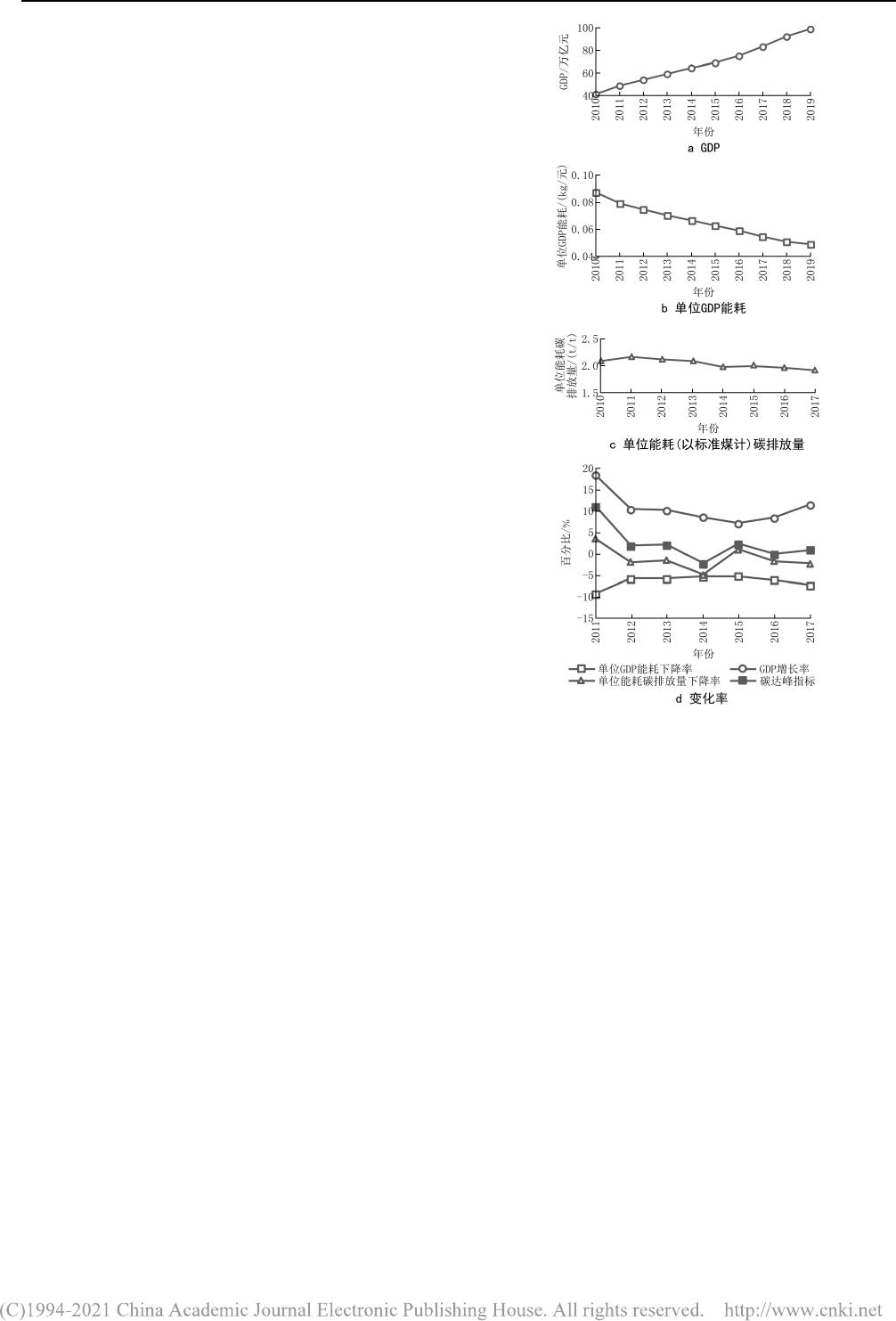书书书
暖通空调HV&AC
2021年第51卷第5期1
[
引用本文]
江亿,
胡姗.
中国建筑部门实现碳中和的路径[
J
]
.
暖通空调,
2021
,
51
(
5
):
1-13
中国建筑部门实现碳中和的路径
清华大学 江 亿☆ 胡 姗
摘要 建筑部门是能源消费的三大领域(
工业、
交通、
建筑)
之一,
也是造成直接和间接碳排放
的主要责任领域之一。在2030年之前力争实现碳达峰,
2060年实现碳中和,
这是中央对我国低
碳发展给出的明确目标和时间表。中国建筑部门实现碳中和意味着零排放,
指的是建筑部门相关
活动导致的二氧化碳排放量和同样影响气候变化的其他温室气体的排放量都为零。针对我国建
筑部门的运行直接碳排放、
运行间接碳排放、
建造和维修导致的间接碳排放及运行导致的非二氧
化碳类温室气体排放进行了分析,
指出了我国建筑领域碳排放的现状水平、
主要来源、
减排关键问
题和实现零排放的路径与关键技术。指出“
生态文明的发展理念是实现碳中和的基础”,
并给出了
我国实现建筑部门碳中和的四个主要任务:
取消直接碳排放,
协助减少电力和热力使用导致的间
接碳排放,
减少建造和维修用材的生产和运输导致的碳排放,
以及避免建筑空调制冷系统使用中
非二氧化碳类温室气体的排放,
应该促进这四个领域的革命性变化和关键低碳技术的应用,
通过
碳中和目标的实现来推动我国建筑行业的技术进步和跨越式发展。
关键词 建筑部门 碳中和 生态文明 直接碳排放 间接碳排放 温室气体排放
Paths
to
carbon
neutralit
y
in
China
’
s
buildin
g
sector
B
y
Jian
g
Yi
★and
Hu
Shan
Abstract
The
buildin
g
sector
is
one
of
the
three
ma
j
or
sectors
of
ener
gy
consum
p
tion (
industr
y
,
trans
p
ortation
and
buildin
g
),
and
one
of
the
main
areas
of
res
p
onsibilit
y
for
direct
and
indirect
carbon
emissions.
Strive
to
achieve
carbon
emission
p
eaks
b
y
2030and
carbon
neutralit
y
b
y
2060
,
this
is
a
clear
g
oal
and
timetable
set
b
y
Chinese
g
overnment
on
low
carbon
develo
p
ment.Carbon
neutralit
y
in
buildin
g
sector
means
zero
emissions
,
which
means
that
the
carbon
dioxide
emissions
and
other
g
reenhouse
g
as
emissions
caused
b
y
activities
in
buildin
g
sector
e
q
ual
to
zero.Anal
y
ses
the
direct
emissions
of
buildin
g
o
p
eration
p
hase
,
indirect
emissions
of
buildin
g
o
p
eration
p
hase
,
indirect
emissions
of
buildin
g
construction
and
maintenance
p
hase
and
non
-
CO
2g
reenhouse
g
as
emissions
of
buildin
g
o
p
eration
p
hase
in
China.Points
out
the
current
status
,main
sources
and
ke
y
issues
of
buildin
g
sector
’
s
emission
,
and
finall
y
p
rovides
p
aths
and
ke
y
technolo
g
ies
to
achieve
zero
carbon
in
China
’
s
buildin
g
sector.Em
p
hasizes
that “
the
develo
p
ment
conce
p
t
of
ecolo
g
ical
civilization
is
the
basis
for
achievin
g
carbon
neutralit
y
”,
and
indicates
four
ma
j
or
tasks
for
China
to
achieve
carbon
neutralit
y
in
the
buildin
g
sector
:
eliminate
direct
carbon
emissions
,
contribute
to
reduce
indirect
emission
from
electricit
y
and
heat
su
pp
l
y
,
reduce
emission
from
construction
material
p
roduction
and
trans
p
ortation
,
and
p
revent
refri
g
erant
leaka
g
e
from
buildin
g
coolin
g
s
y
stems.The
revolutionar
y
chan
g
es
in
these
four
fields
and
the
a
pp
lication
of
ke
y
low
-
carbon
technolo
g
ies
should
be
p
romoted
,
and
the
technolo
g
ical
p
ro
g
ress
and
lea
p
fro
g
develo
p
ment
of
China
’
s
construction
industr
y
should
be
p
romoted
throu
g
h
the
realization
of
the
carbon
neutralit
y
g
oal.
Ke
y
words
buildin
g
sector
,
carbon
neutralit
y
,
ecolo
g
ical
civilization
,
direct
carbon
emission
,
indirect
carbon
emission
,
g
reenhouse
g
as
emission
★Tsin
g
hua
Universit
y
,
Bei
j
in
g
,
China
☆江亿,
男,
1952年4月生,
博士研究生,
教授,
中国工程院院士
100084 北京市海淀区清华大学建筑学院建筑节能研究中心
E
-
mail
:
j
ian
gy
i
@
tsin
g
hua.edu.cn
收稿日期:
2021-04-08
0
引言
在2030年之前力争实现碳达峰,
2060年实现
碳中和,
这是中央对我国低碳发展给出的明确目标
和时间表。低碳发展不仅仅是能源领域的任务,
而
是涉及各行业、
各部门的各项工作,
将对我国今后
40年的社会经济发展带来巨大和深远的影响。建
筑部门是能源消费的三大领域(
工业、
交通、
建筑)
之



 VIP
VIP VIP
VIP VIP
VIP VIP
VIP VIP
VIP VIP
VIP VIP
VIP VIP
VIP VIP
VIP VIP
VIP